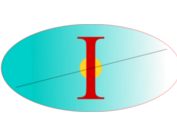Citation:
| ge2013.pdf | 208 KB |
Abstract:
We develop an alternative formulation in the energy-domain to calculate the second order Møller–Plesset (MP2) perturbation energies. The approach is based on repeatedly choosing four random energies using a nonseparable guiding function, filtering four random orbitals at these energies, and averaging the resulting Coulomb matrix elements to obtain a statistical estimate of the MP2 correlation energy. In contrast to our time-domain formulation, the present approach is useful for both quantum chemistry and real-space/plane wave basis sets. The scaling of the MP2 calculation is roughly linear with system size, providing a useful tool to study dispersion energies in large systems. This is demonstrated on a structure of 64 fullerenes within the SZ basis as well as on silicon nanocrystals using real-space grids.
Notes:
RBaer-Publication



